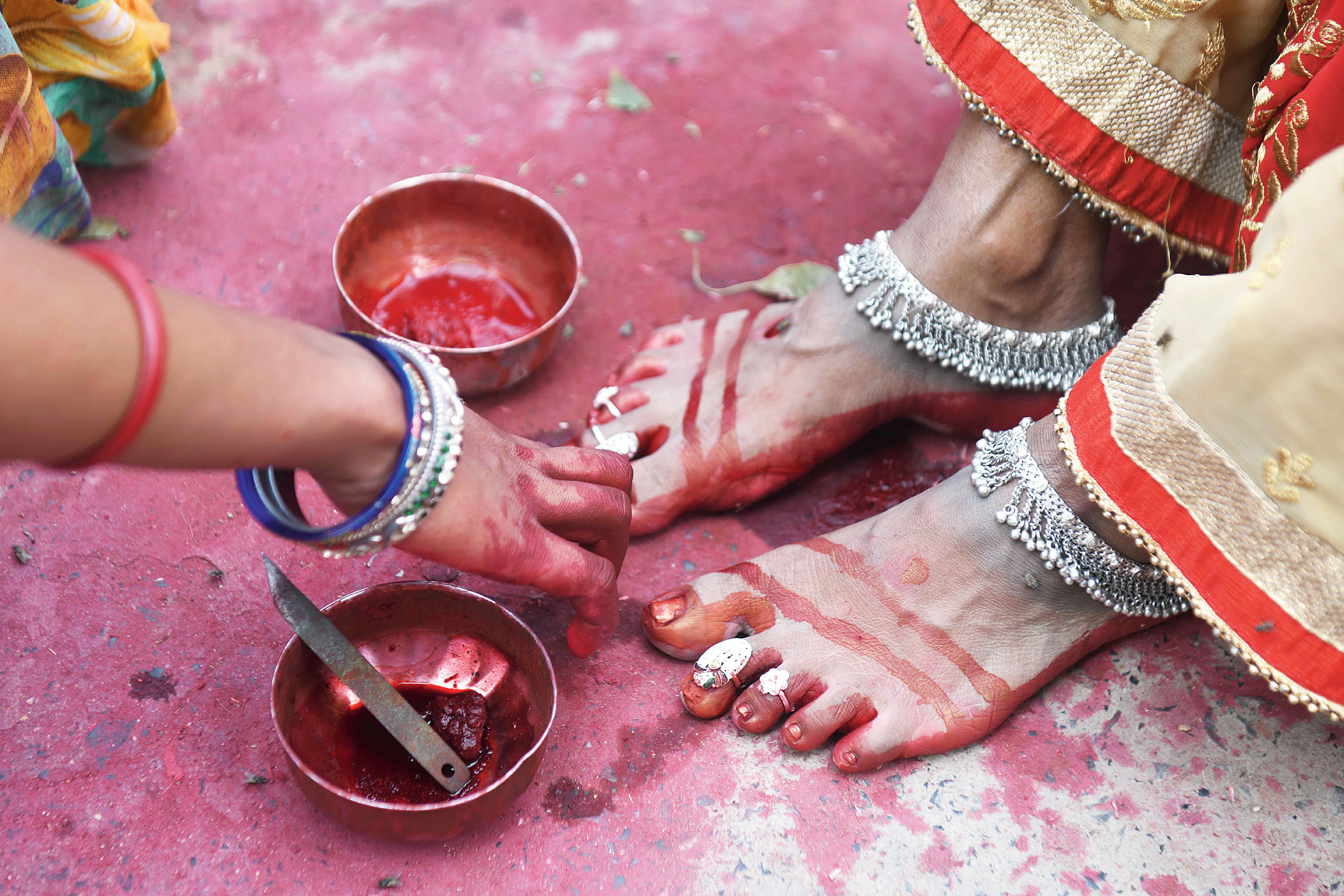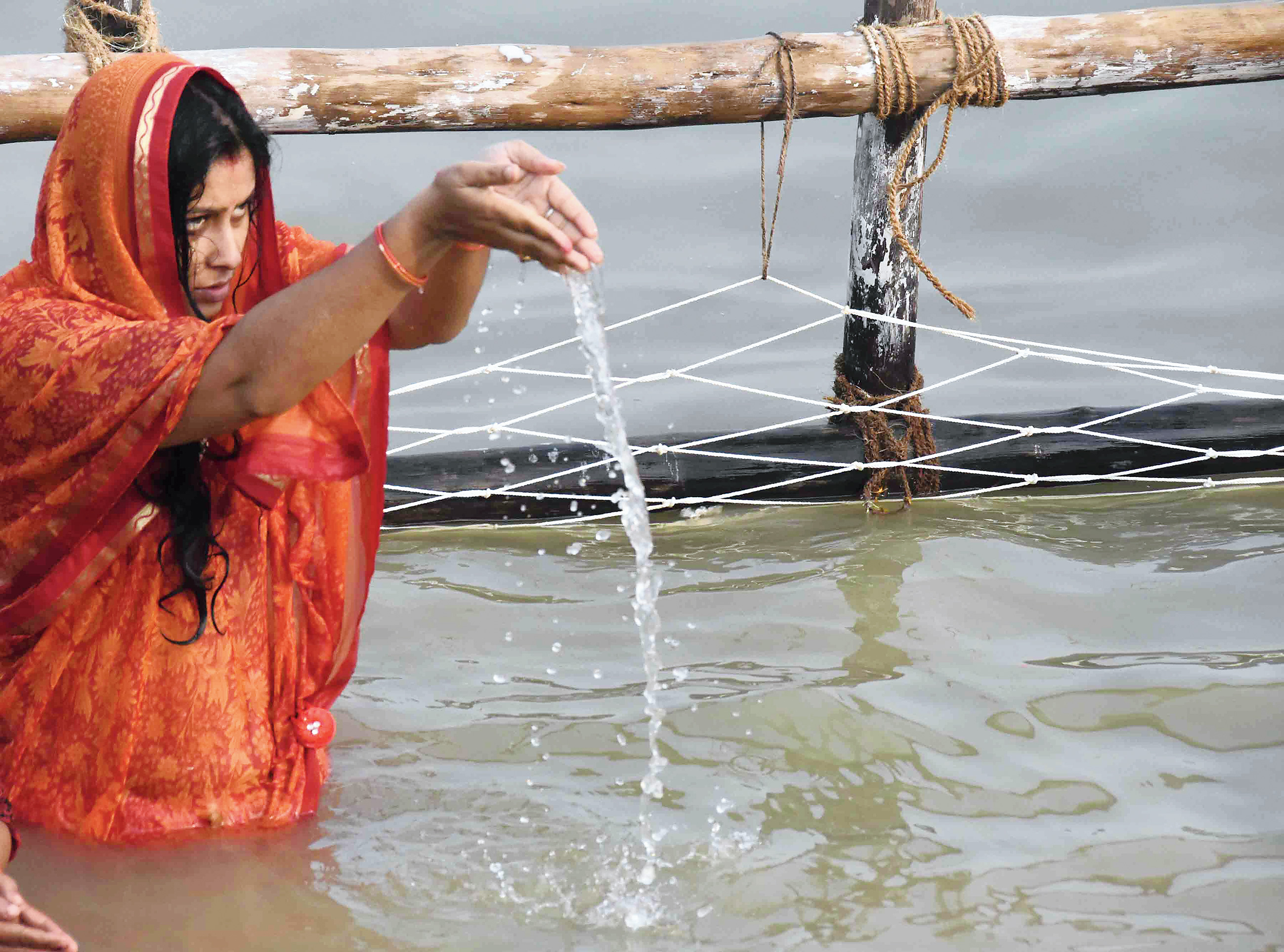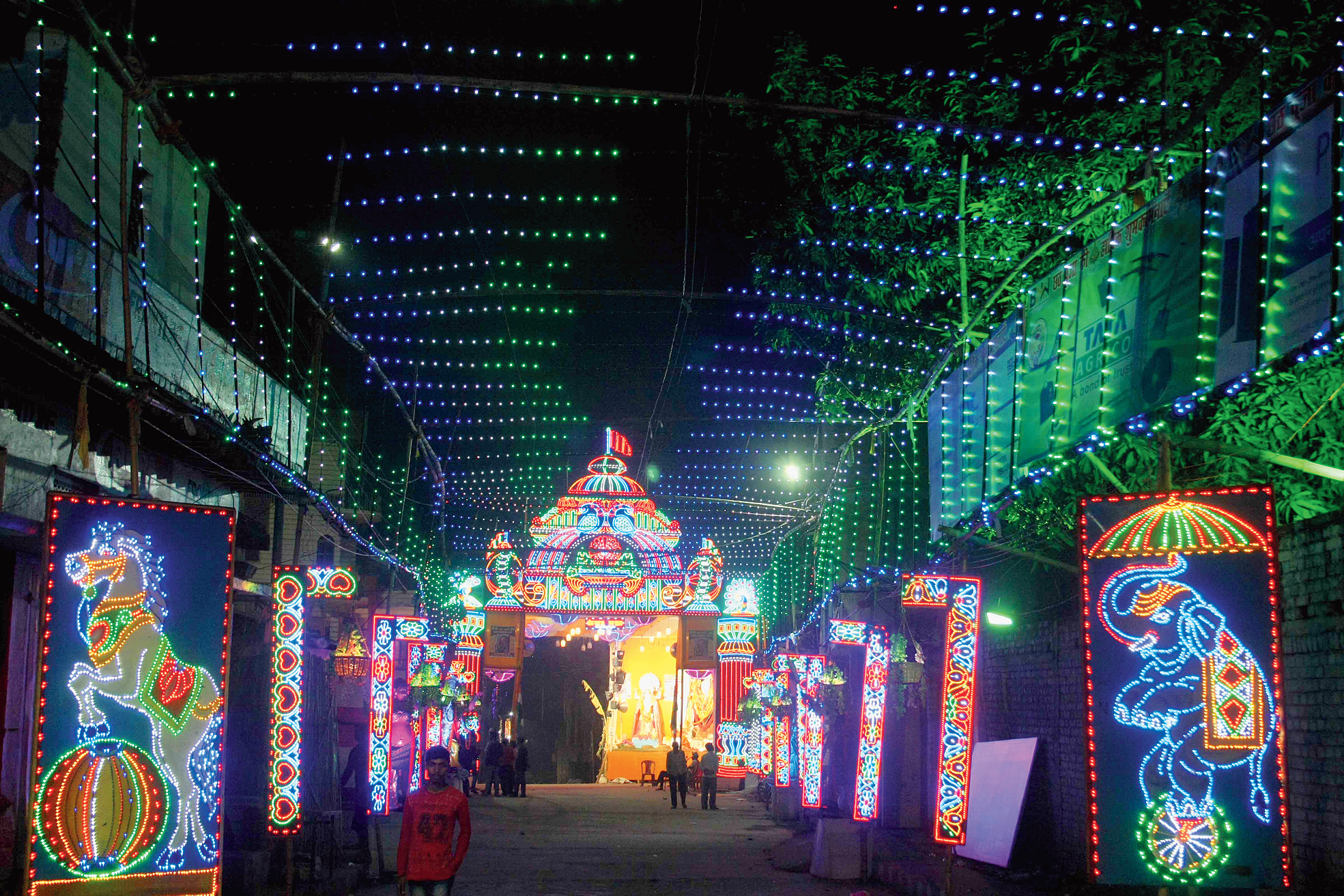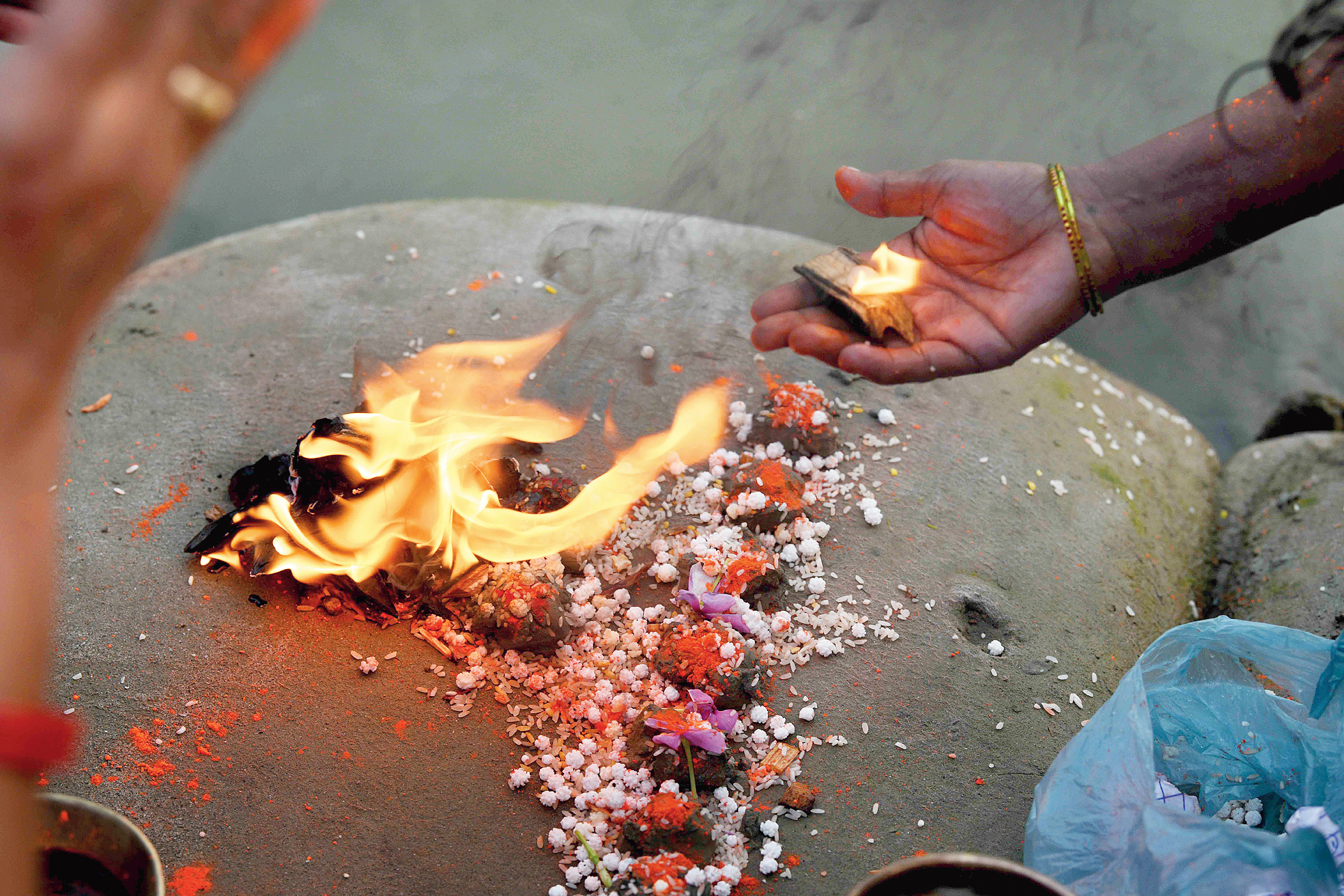
A woman gets her feet decorated at Khajekalan Ghat Ashok Sinha
Hundreds of thousands of devotees thronged the ghats on Sunday to collect water from the Ganga water to perform rituals for Chhath, Bihar’s signature festival that began with Nahay-Khay today and will end with morning Arghya on Wednesday.
The Telegraph visited a few ghats on Sunday morning to check on the preparations, and we are happy to report that they were clean with excellent arrangements made by the district administration to ensure convenience and safety of the devotees.
National Disaster Response Force (NDRF) and State Disaster Response Force (SDRF) boats were patrolling the waters of the Ganga; the approach roads were decked-up with proper lighting across the ghats.
Many devotees were washing the wheat at the ghats to prepare the Chhath prasad.
Every 10 to 15 minutes, announcements over public address systems detailed the facilities available at the ghats and also warned devotees to not to cross the barricades.
The devotees, mostly married women, made a beeline to the banks from 5am to bathe before preparing vegetarian food.
Traditional songs echoed at the ghats with many women singing devotional songs dedicated to the Sun God as they took the holy dip.
At Collectorate Ghat, the arrangements seemed in place and police jawans were deployed to guide devotees.
There was adequate parking space and heaps of garbage, a common sight, were conspicuous by their absence.
There were barricades for the safety of the devotees with yellow cloth wrapped around the poles and red cloths for warning.
Chhath devotees observe a fast for 36 hours and traditionally offer wheat, milk, sugarcane, bananas and coconuts to the Sun. The vrati takes only one meal, which is lauki or kaddu bhat (green gourd and rice) and the same is also offered as prasad.
At Patipul Ghat in the Danapur area, traditional prasad on the day of Nahay Khay was also being cooked using earthen or brass utensils and mango firewood over an earthen stove.
Water from the Ganga was being used in the preparations.
At Mahendru Ghat, Mridula Sinha, a resident of Bakarganj locality, said she has never found the ghat so neat and clean.
“I have been coming to this ghat for the past 10 years but never seen such arrangements. Every passing year, the district administration is making extra effort to provide better facilities to the devotees,” she said.
There were many families who had come from outside Patna to observe the festival. They will spend all four days at the ghats. One such devotee, Malti Devi from Naubatpur, around 23km south-west of the state capital, was at Kurji Ghat.
“Observing Chhath at the Ganga ghat has its own importance,” she said.
Collectorate and Mahendru ghats, spread over 2 km, have already received more than two lakh people.
If devotees wants go to these ghats with vehicles they have to enter from Bans Ghat. The devotees have to park their vehicle 500 metres before the ghat.
The other way to reach Collectorate and Mahendru ghats is via the district magistrate’s office; parking is available at Gandhi Maidan.
Gandhi Ghat and Kali Ghat looked equally crowded on Sunday morning.
Patna district magistrate Kumar Ravi visited several ghats on Sunday morning to ensure that devotees don’t not face any problems.
The ghats he visited included Collectorate Ghat, Pehalwan Ghat, Rajapur Pul Ghat, LCT Ghat, Patipul Ghat, and Bans Ghat.

A devotee pays obeisance to the Sun God Sachin Sinha

Lighting at the Khajekalan Ghat in Patna City Sachin Sinha

Rituals in progress at Quila Ghat Ashok Sinha

People throng Kangan Ghat on Sunday Sachin Sinha











